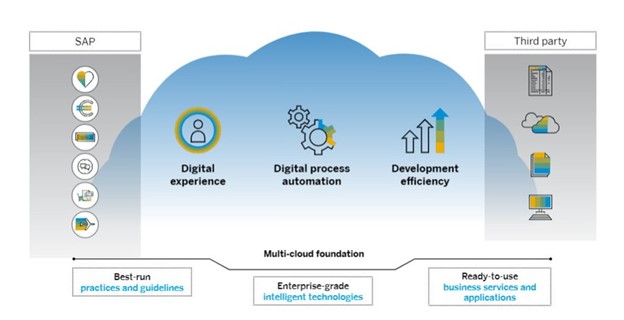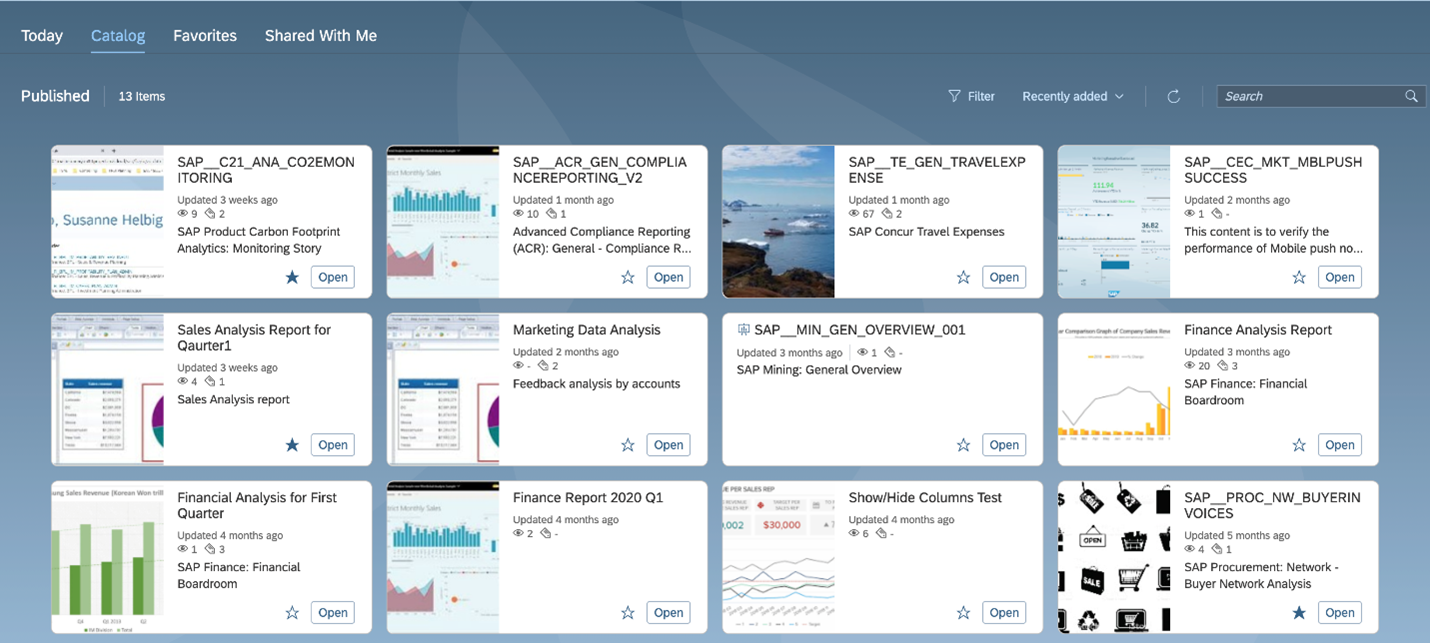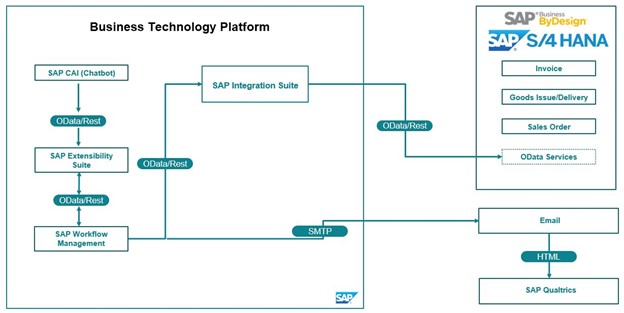Jonathan Andre is a lead ABAP developer at IT Partners. Jon has over 10 years experience with SAP, with a concentration on ECC SD, MM, and IS-OIL modules. Jon’s focus has been in the areas of ABAP OOP, ABAP Web Dynpro, and ABAP for HANA and RESTful ABAP development. He can be reached at [email protected]
The transition to cloud-based software solutions in the past decade plus has changed the ERP landscape forever. Many customers have ditched the more expensive on-premise system model for a more cost effective and scalable cloud-based ERP SaaS (Software as a Service) route. . In an effort to address this issue, SAP began offering a new cloud-based approach to custom application development and deployment, the SAP Business Technology Platform. Last month Jon went into what the BTP is, and some of the services provided, such as the Integration Suite.You can read that blog by following this LINK.
This month we look at the SAP Extension suite.
Next, well have a closer look at the Extension Suite and some of the main features it has to offer. This will not cover the Extension Suite exhaustively, as there are over 80 Extension Suite services, with services constantly being added or deprecated. Instead, we will cover the three categories of Extension Suite services, Development Efficiency, Digital Experience, and Digital Process Automation.
The Development Efficiency services of the BTP provide developers with a variety of features to code, manage, deploy and monitor custom cloud solutions. As the core of Development Efficiency, and really as the core of the BTP in general, lies multiple runtime environments that support a variety of coding languages. The runtime that will be used for most custom application logic is the Cloud Foundry.
The Cloud Foundry allows developers to choose from a variety of languages to begin coding their custom solutions. Available languages the run in the Cloud Foundry include Java, Node.js, Ruby, Go, Python, and PHP. The Cloud Foundry is also where the ABAP runtime environment is deployed, however the ABAP runtime (sometimes referred to as SteamPunk) requires a separate, additional service. The ABAP runtime supports the ABAP Strict coding language, which is a more secure and restrictive subset of the normal ABAP language available on S/4 systems. To code the various applications, users will primarily use Business Application Studio for non-ABAP applications, and connect directly to the ABAP Runtime with Eclipse for all ABAP Development.
In addition to the runtime environments, the Extension Suite provides a variety of quality-of-life services to make organizing, monitoring, and transporting applications much easier. A few services that would be useful when extending an ERP solution are:
Job Scheduler – Create one time or recurring jobs that will trigger the execution of an application or service within the BTP.
Alert Notification – Create or receive alerts when service encounter errors or unforeseen issues. Send alerts by email, text, launchpad notifications, or even transmit messages via API.
Cloud Transport Management – Manage transports between accounts of various development environments (for example, between development and staging Cloud Foundry environments).
SAP HANA Cloud – Manage SAP HANA cloud instance and create database level artifacts to take advantage of HANA features or optimize data access. In addition to allowing custom extensions to store required data, the SAP HANA Cloud can serve as the central repository for all data, in a “hub-and-spoke” data architecture model. In this way, the entire enterprise can have a single source or truth, across legacy systems, newer systems, cloud and on-premise alike.
Master Data Governance – SAP offers a specific service to implement the “hub-and-spoke” architecture mentioned above for master data, the Master Data Governance (MDG) service. This approach ensures that all enterprise systems are operating with the same version of master data. Additionally, the MDG simplifies existing master data integration while also greatly reducing the cost of adding new systems, since all systems have one point to integrate with to gain full access to the enterprises master data.
The Digital Experience are less about development and more how the to present the applications to the customers/consumers. Things related to GUIs, document creation, modifying existing UI5 applications with low-to no code are found here. Businesses can pick and choose which services best suits their end-user delivery strategy. Some of the key services include:
Launchpad Service – While some businesses may opt to program applications and incorporate them directly into an existing Fiori launchpad, others map choose to deploy applications directly on the BTP. The Launchpad Service allows the BTP to host its own business applications, with role-based access similar to the Fiori Launchpad on S/4.
Conversational AI – Create chatbots to interact with users and bring conversational interaction that many mobile users have come to expect to the business world. Developers can train, build test and deploy conversation chatbots using this service.
SAP Analytics Cloud – Touted as the “single cloud solution for business intelligence”, the SAP Analytics cloud provides tools to assist with planning, predictive analyses, and sophisticated graphics to enable easy consumption for end users.
SAP AppGyver – A no code tool that allows the creation of web or mobile applications. Drag and drops tools allow users to create application components, including the GUI layout and the program logic. Applications can also integrate with APIs and perform data transformations
The last of the Extension Suite categories, the Digital Process Automation services, provide a way for repetitive tasks to be made easier or even completely automated. Some available services include:
SAP Intelligent RPA – Allows developers to design “robots” that can perform many of the tasks humans can perform (e.g, click a link on a webpage, search an email for a string of text, log into SAP and download an excel output of a report), but in an automated and less error prone fashion. Robots can perform tasks completely on their own (unattended), or perform tasks in concert with a human user (attended). Both options can greatly increase efficiency in the correct situations.
SAP Workflow Management– Provides an environment to create and monitor Workflows in the BTP. Processes can be configured in this tool with a low-code approach. Embedded applications include execution statistics and processes still in execution. Workflows can be configured cross system, allowing full enterprise configuration.
SAP is fusing these two existing tools into one product aimed at business process automation, one of the key tenets for digital transformation.
SAP Process Automation combines SAP Workflow Management, which launched in 2009 to digitize workflows, and SAP Intelligent Robotic Process Automation (RPA), which came out in 2018 to automate workflows, into one package.
The combined tool uses a low-code, no-code drag-and-drop user interface that enables business professionals and citizen developers to create and automate process workflows. The product, which is available now, is an extension of SAP’s investment in process automation technology. You can read about it more in our April News Letter,
There were many services that were not covered, so those interested in moving to the BTP should do some research to see what is available. A good starting point for this is SAP’s Discovery Center. This website has a list of all services available, including both the Integration Suite and the Extension Suite. In addition to just descriptions, the website has an estimation tool so users can check pricing on any service bundles they create. The website also incorporates a “Missions” section, which will walk through the different steps and services required to complete some task. Missions from simple getting started tutorials all the way down to specific business objectives, like establish workflows between SAP and external applications. A link to the Discovery Center can be found HERE.
Summary
SAP Extension Suite gives you the services, tools and capabilities to build and maintain extensions to your business apps in the cloud. Use it when you need to implement additional processes on top of your existing SAP applications.
In future blogs, we will take a deeper dive into the separate suites of the BTP and create an extension application for an SAP S/4 HANA process. This will cover creating an integration solution in the Integration Suite, and building an ABAP application that also takes advantage of other BTP services. Finally, we will illustrate how to incorporate this solution into the Fiori launchpad.








